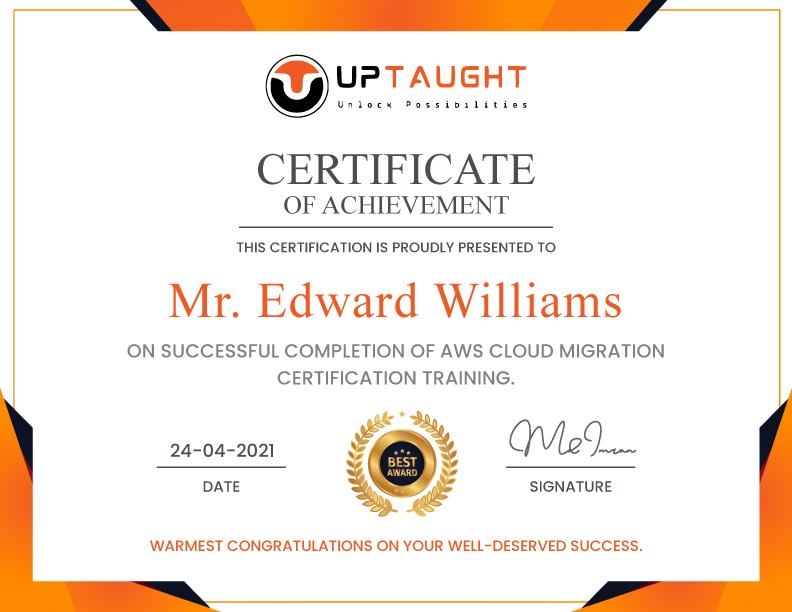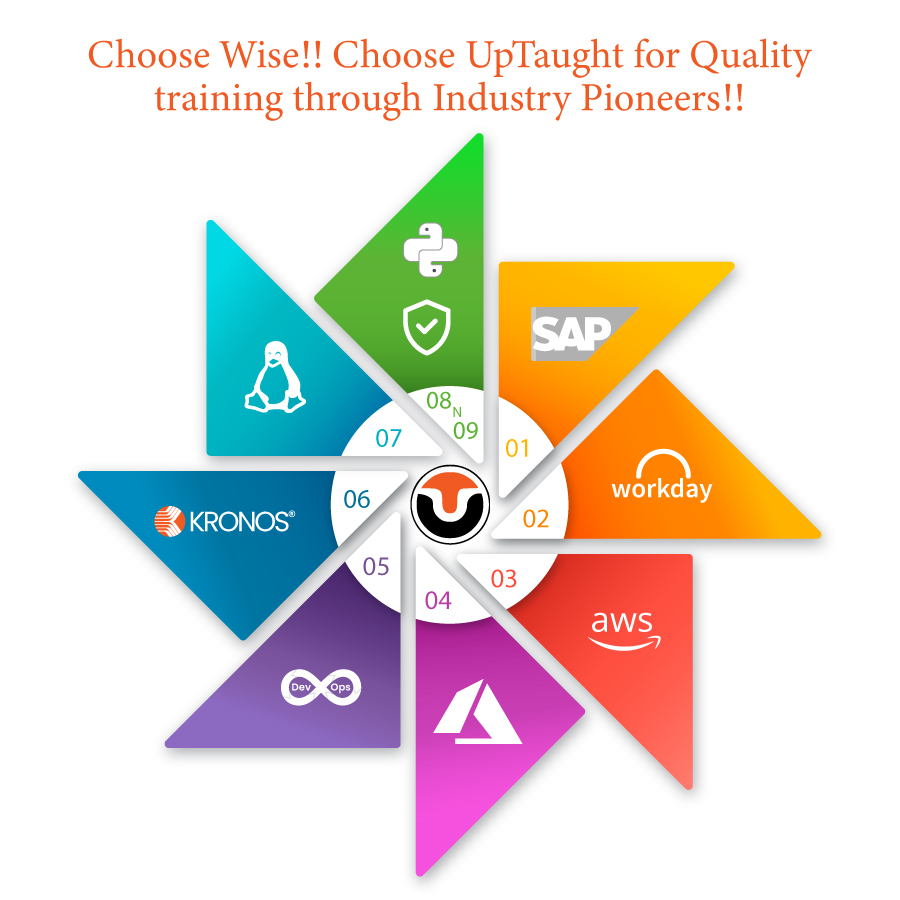AWS Cloud Migration Certification Training
AWS Cloud Migration Online Training is known as most benefited Mentorship – Driven Cloud Computing and Migration course. Now learn to apply about 100s of relevant concepts and tools of cloud computing platform of AWS. We provide active industrial specialized case study operations for hands on projects with lab enabled studies. We can help you build a solid foundation by enabling you to understand AWS Cloud Migration and Cloud Computing on a whole for applied solutions.
-
LevelAll Levels
Start Date
Time
Duration
Type
Mode of Training
Course Curriculum
Module 1 – Introduction to AWS Services
-
1. AWS Compute, Storage, networking Services
-
2. AWS EC2 Instance launch Demo
-
3. AWS S3 Demo
-
4. AWS security model and Security Services
-
5. AWS IaaC with Cloud formation
-
6. AWS Auto scaling, Load balancing and Cloud Watch Demo
Module 2 – AWS Migration Strategy
-
1. AWS CAF – Cloud Adoption Framework
-
2. 6R Migration Pattern
-
3. AWS Well Architecture Framework
Module 3 – Application Migration To AWS
-
1. Application discovery services
-
2. Server Migration services
-
3. Agent based and agentless server migration service
-
4. Migration on Premises Microsoft Hyper VM to AWS AMI
-
5. Migration on Premises VMware VM to AWS AMI
Module 4 – Database Migration To AWS
-
1. DB Migration challenges
-
2. AWS DB Services
-
3. AWS DB Migration services
-
4. AWS Pre during and post migration task
Module 5 – Data Migration To AWS
-
1. Storage Gateway
-
2. Kinesis Firehose
-
3. Snowball, Snowball edge and Snowball Mobile
-
4. Direct Connect
-
5. S3 Transfer Acceleration
Module 6 – Migrating monolithic application to AWS with Docker
-
1. Understand Docker Ecosystem
-
2. How docker can be used to package a monolithic application inside docker container
-
3. Understanding how ECS works with docker
-
4. Orchestrate a docker container-based system
AWS Cloud Migration Certification Training
-
LevelAll Levels

Roadmap
Salary range
FAQs
For AWS Operations, it takes a minimum of 3-4 months to learn the concepts like management of AWS instance and permissions, security management, troubleshooting problems, EC2 configuration, etc.
The four types of cloud migration are called lift and shift, shift to Software-as-a-Service (SaaS), application refactoring, and re-platforming
The following are the key benefits of cloud migration:
- Optimized costs.
- Flexibility and scalability.
- Enhanced security.
- Compliance.
- Backup, recovery, and failover.
- Simplified management and monitoring.
Yes, you just need to enrol with UpTaught and then you can learn AWS at any time, at any place, and on your schedule.
UpTaught’s training comes with live instructor led sessions with a 24×7 support system. We also deliver real-time projects to execute on for better hands-on for all learners.
AWS Cloud Architect directly associates with engineers as well as clients, delivering an interface with stakeholders and technical leadership. The cloud architect deliveries lead implementation efforts and technical architectures assuring that the interspersion of new technologies is being adopted.
Server migration Service offered by AWS is an agent-less service option that assist you plan, monitor and perform migration of thousands of application from on-premise workloads to cloud.
Cloud Migration refers to the whole process of moving data, applications or other business valued elements from a local to a cloud computing environment. Cloud migration. Based on organizational needs, there are different types of cloud migration that one can execute. Migrating from a local data center to a public cloud is one example.
AWS Landing Zone is a solution delivered by Amazon that assists us in forming secure, multi-access AWS environment keeping the best practices in mind. This environment is configurable which offers the additional benefit to implement our own account baselines through a Landing Zone configuration and updated pipeline.
The following are the Pros of having this AWS Certified Cloud Practitioner:
- Needs minimal technical AWS knowledge
- Simplest and very less expensive AWS exam
- Good milestone toward associate certifications
The following are the Cons of having this AWS Certified Cloud Practitioner:
- Not as helpful for those with technical AWS experience
- Does not offer technical training
The average annual salary of a professional holding an AWS Cloud Practitioner certification is $148,623.
To accomplish this role, a cloud architect must hold a mix of business, technical, and people skills. On the business front, he must:
- Understand how software and hardware systems get business visions to life
- Get an insight into end-users’ problems and their work processes, and turn them into solutions that increase efficiency
- Have a hold on the technical aspects of a project so they can form a convincing case for a buy-in
- Resolve scalability issues
- Manage integration challenges with third-party programs
Cloud architects, as the name recommends, are tasked with handling an organization’s cloud computing architecture. Their role entails being comprised in cloud migration initiatives, reviewing workload architectures, and guiding their company teams to address high-risk issues.
They also act as a connection between the technical and the business sides of cloud adoption in an organization. Therefore, it’s a part of their accountability to oversee that technical decisions the developers make are closely aligned with business objectives.
AWS approaches large-scale migrations in three phases: assess, mobilize, and migrate.
Your talent needs to be capable of supervising your cloud and comprehend the effort required for a successful migration.





